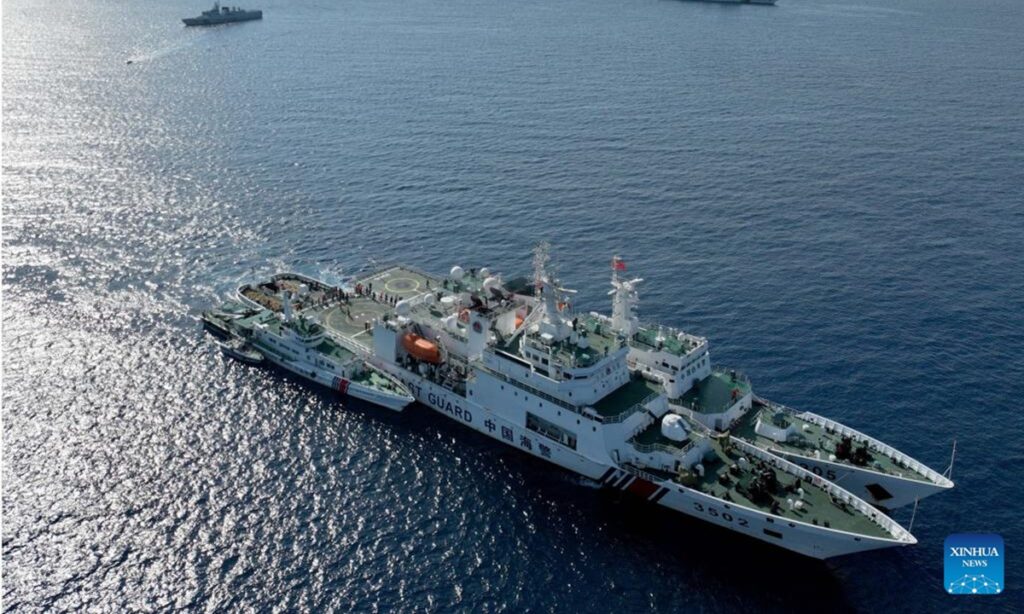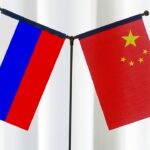The Philippines could stir up trouble in yet another Chinese island in the South China Sea, Chinese experts warned on Thursday, after Manila’s provocative intrusions into waters adjacent to Xianbin Jiao (also known as Xianbin Reef) and Ren’ai Jiao (also known as Ren’ai Reef) on Monday.
The Philippines is expanding the military infrastructure on Zhongye Dao (also known as Zhongye Island), a part of China’s Nansha Qundao (also known as Nansha Islands) but illegally occupied by the Philippines, in a move to potentially invite warships and warplanes from countries outside the region such as the US and Japan, sabotaging peace and stability in the South China Sea in the process, Chinese experts said.
According to an analysis made by Zhang Jie, a research fellow at the National Institute of International Strategy under the Chinese Academy of Social Sciences, the Philippines has been building up tensions in the domain of international public opinion this year in a bid to ramp up the pace of its infringing moves on Zhongye Dao.
In May, Philippine defense chief Gilberto Teodoro Jr and other Philippine officials attended a groundbreaking ceremony of the Philippine Navy barracks on Zhongye Dao, the Philippine Daily Inquirer reported at the time, hyping the presence of Chinese vessels around the island during the event.
In July, Philippine President Ferdinand Marcos Jr said that the development of an airport on Zhongye Dao is one of the priorities of his government, the Philippine Daily Inquirer reported.
The Philippines has established a military and civilian presence in the area, the report said.
Then in August, the New York Times published a story entitled “The Filipinos Living in the Shadow of China’s Military Might,” claiming that the Chinese presence around Zhongye Dao “startled” the Philippines, prompting it to upgrade its crumbling military facilities that lie on the island’s southern end.
Zhang told the Global Times on Thursday that these moves show the distinctive characteristics of what the Philippines commonly does before stirring up trouble in the South China Sea.
Since August 2023, the Philippines has made infringing provocations on multiple Chinese islands and reefs in the South China Sea, including Ren’ai Jiao, Huangyan Dao, Tiexian Jiao, Houteng Jiao and Xianbin Jiao.
On Monday, Philippine Coast Guard ships consecutively intruded into waters adjacent to Xianbin Jiao and Ren’ai Jiao in violation of China’s territorial sovereignty.
The Philippines’ moves on the South China Sea issue have been more proactive and aggressive compared with China’s restrained measures, as Manila relies on its allies rather than its own strength and is playing with global public opinion and international law, Zhang said.
After hyping up tensions, Manila will likely speed up its infringing activities on Zhongye Dao. It cannot be ruled out that the Philippines’ latest upgrade of Zhongye Dao’s infrastructure could host aircraft and ships from countries outside the region, providing convenience to countries such as the US and Japan in their possible military interference in the South China Sea, Zhang said.
A Chinese military expert who requested anonymity told the Global Times on Thursday that after the extension, the Philippines’ airport could potentially host larger warplanes in addition to those capable of short takeoff and landing.
Aircraft such as medium-sized transport planes, special mission aircraft and fighter jets from countries outside the region could appear on Zhongye Dao, the above-quoted expert said.
This will undoubtedly sabotage peace and stability in the South China Sea, observers said.
Restraint from Chinese side
Despite increasing domestic calls for a response, China has restrained itself from pushing further in the construction of civilian facilities in Nansha Qundao in a move to maintain the overall stability in the South China Sea. It has become obvious that it is the Philippines that has been escalating the South China Sea issue, observers said.
To resolve the issue, Zhang suggested that China and ASEAN member states continue to promote the full implementation of the Declaration on the Conduct of Parties in the South China Sea, and accelerate the negotiations on the Code of Conduct in the South China Sea, so as to form a set of common rules and standards that will be followed by all parties and achieve peace and stability in the region.
But if the Philippines insists on acting willfully, China will have to show its determination to safeguard territorial sovereignty and maritime rights in the form of strength, Zhang said.
GT




